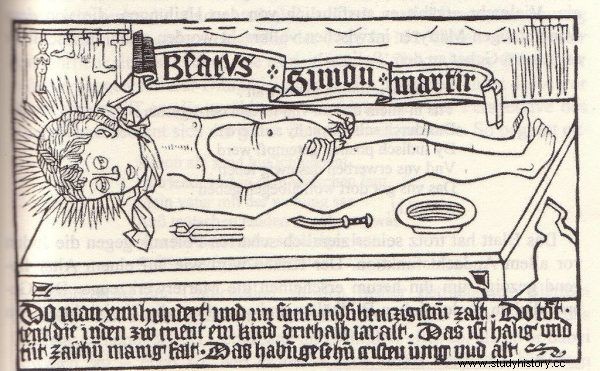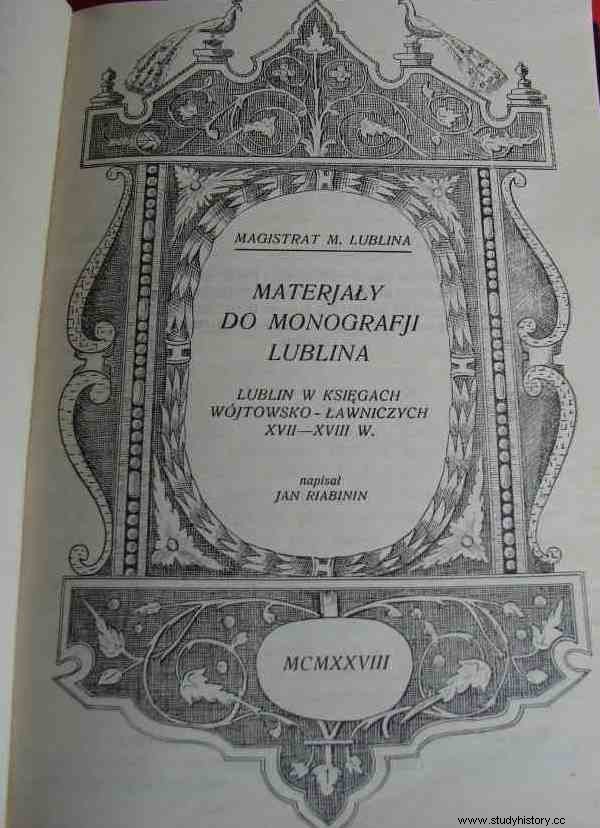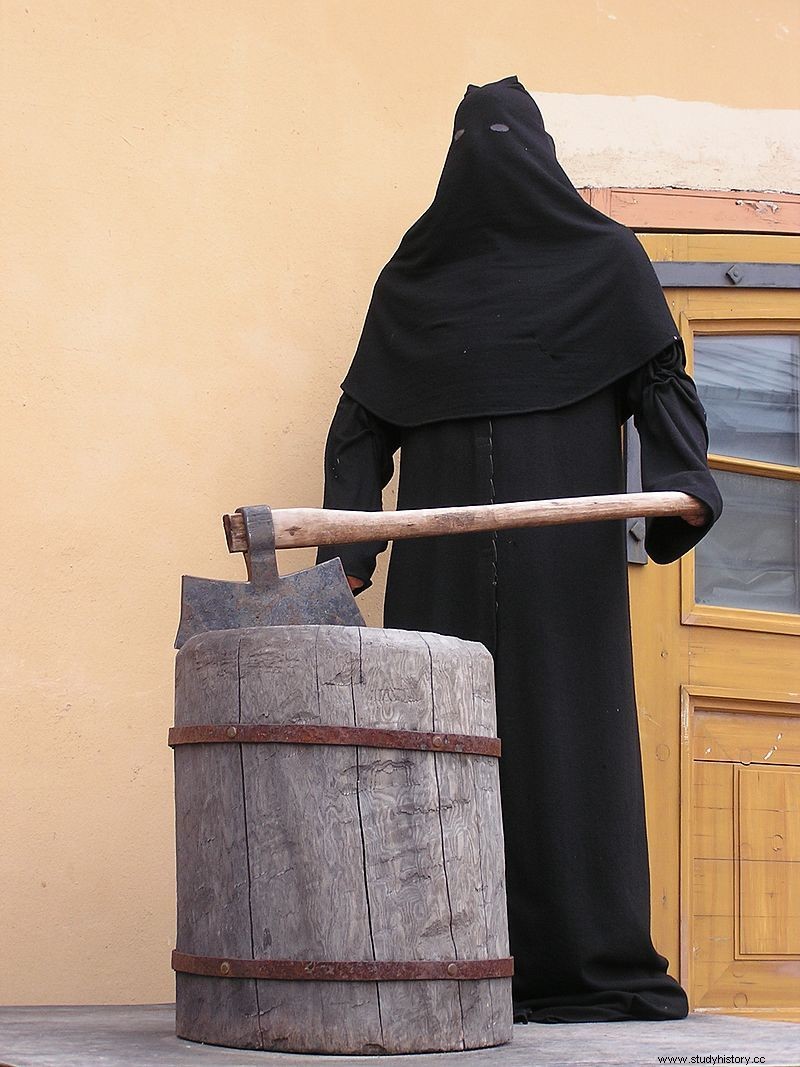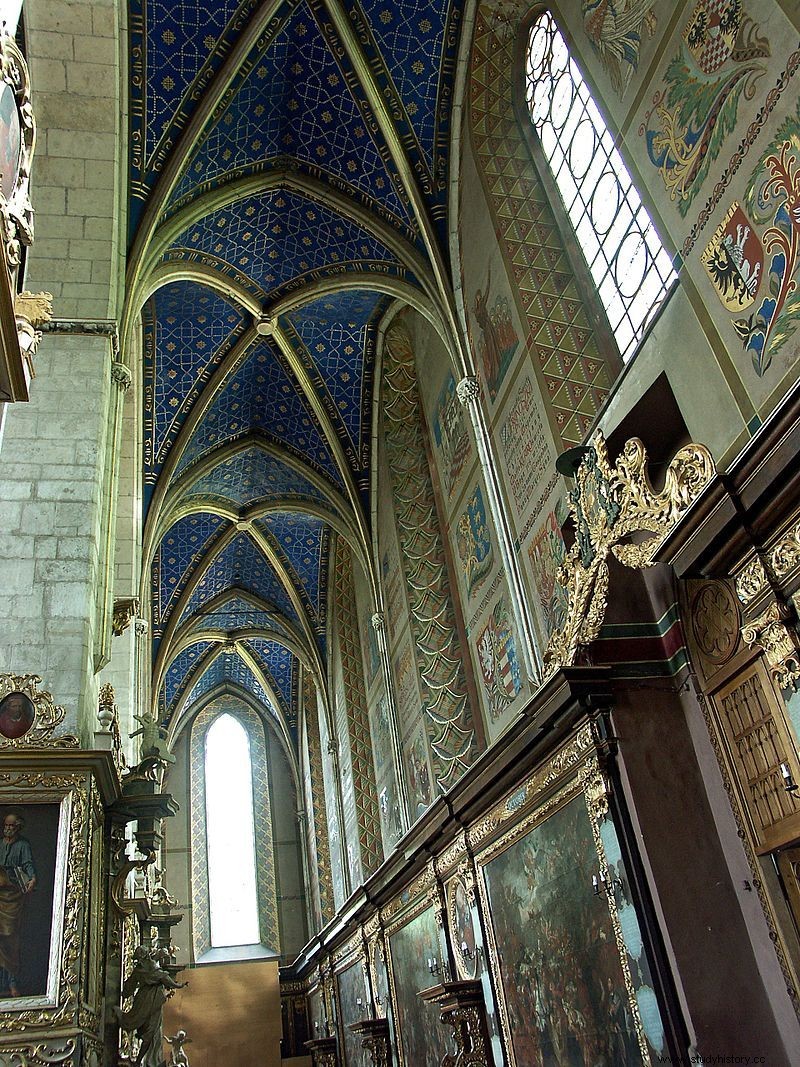In a time without professional investigative offices and DNA testing, finding the culprits was remarkably easy. When the body, especially the child's body, was found, the perpetrator was obvious:a Jew. It was enough to add an equally obvious ritual motive and the case was closed. Are you sure?
On August 18, 1710, the body of a few-year-old Jerzy Krasnowski was found in Sandomierz. The child's body was lying near the house of the local rabbi, Jakub Hec. During the examination, carried out at the request of the city authorities, the boy was found to have numerous injuries to his breast, head, neck and lower and upper limbs. Wounds resulting from cuts, thrusts, and punctures were performed with a high understanding of anatomy.
It was decided to accuse the local Jews of a drastic, ritual murder. However, there was a problem:those brought to trial did not want to plead guilty. So they had to be forced somehow. Sent to torture, the authorities intended to break them quickly, while the judges would enjoy the splendor of yet another triumph of the judiciary, avenging the harms of the rightful citizens of the city. Unexpectedly, fate played a trick on the accusers:instead of the tortured prisoner, the tortured executioner gave up his ghost. But let's start from the beginning.
And why run away? They'll catch you anyway
First, there were several obstacles to overcome. The first was the disappearance of the suspects:Rabbi Herc, his son and son-in-law, near whose house the bodies were found. Knowing who will be accused, the men decided to warn the judges by fleeing as quickly as possible to Raków.
Father Stefan Żuchowski, the parish priest and official of Sandomierz, a doctor of both laws, intervened in the case. He was an ardent anti-Semite. He promoted the thesis that the followers of Judaism murder Christian children, and then use their blood to prepare matzo . Żuchowski ordered the suspects to be brought from Raków to Sandomierz and brought to trial for the murder. He also took care of the appropriate "piar", persuading Karol de Prevot to paint a series of paintings depicting the alleged ritual murder of a Christian child (one of them is included at the beginning of the article). The destructive power of the canvases was stunning.

The legend of Simon of Trent, a boy murdered under unknown circumstances, had a huge impact on the spread of rumors about the ritual murders of Jews. At the end of the 16th century it was recorded by Piotr Skarga, who mentioned it in his "Lives of the Saints". The illustration shows a drawing from 1479 showing the alleged ritual murder committed by the followers of Judaism.
Father Żuchowski thus became the main ringleader and prosecutor in the trial for the murder of Jerzy Krasnowski. Suspected Jews were quickly caught and put on trial. At that time, Sandomierz was under the jurisdiction of Lublin, so the trial was held at the Crown Tribunal in Lublin.
Where's the hangman?
In order for there to be no doubt as to the brutality with which the murder was committed, another examination of the victim's body was ordered. The new research confirmed all previous findings, even though it was at this exact time (end of August) that the city was under tropical heat, contributing to the rapid decomposition of the body and significantly hindering the autopsy.
On August 30, the interrogations of the accused Jews began in Lublin. Neither of them pleaded guilty. The Tribunal therefore decided to spend them on torment. It was not possible to convict anyone who did not officially confirm that he had committed the crime. Moreover, according to the old law, the confession of the accused during the torture had then to be confirmed in an already "voluntary" statement. Otherwise, the suspect could expect another meeting with the executioner. The use of torture in Poland was prohibited only by the law of 1776.

There were two chambers in the Lublin Crown Tribunal for the purposes of the court:the upper and the lower. In the first, the accused gave voluntary testimony. The lower room, in the dungeon, was the executioner's place of work. The rooms of the torture chamber were filled with objects that can be seen today in museums or in paintings. There were, among others:toasting rails, rota for dragging the body, Spanish boots, metal screws .
The torture of the Jews of Sandomierz was to begin on September 2. However, there was a problem. The main performer of the planned activity was lost somewhere:executioner. He was searched around the city for almost the whole day. Unsuccessfully. The man wasn't found until the next day. Plus drunk as a log. Suspicions fell on Jews again, this time relatives of the accused. It was they who had to bribe the executioner with booze in honey to prevent the planned torture!
Bloated like a barrel and collapsed
The torture, though with a slight delay, had begun. Before twelve o'clock the court guards led the accused into the dungeon. The first to be tortured was a certain Wolf. The main of the planned torments was ... shaving the man's beard. The removal of facial hair is humiliating for Orthodox Jews and is contrary to their religious tradition recorded in the Book of Leviticus. The "Master of Justice" expected Wolf to plead guilty in protest, thus saving him further effort. But when tortured, he bravely endured a degrading shave. Upset by the stubbornness, the executioner threw the razor aside and looked around for the toasting rail.

In the Middle Ages, the profession of executioner was elite, but it was associated with social exclusion. It required advanced knowledge, especially in the field of anatomy. It was necessary to know how to inflict torture in order not to lead to the premature death of the accused. The photo shows the figure of an executioner in the Peter and Paul Fortress. Doesn't it look scary?
As she was nowhere to be found, he went to look for a rail to the other room. The guards who were guarding the prisoners suddenly heard a scream. One of them ran after the executioner and saw the man literally staggering on his feet. His body bloated strangely, like a barrel; he wanted to say something but couldn't. After a short while, he fell with a thud on the stone floor and, as Father Żuchowski put it in his one-sided account of the Lublin trial:"his life before his torment (...) is over".
There was a real uproar. The guards quickly pulled the dead executioner out of the dungeons, leaving the accused in him. They immediately notified the commune head about this strange accident. Armed reiters were sent to the underground, and they entered there reluctantly. The sight, however, quickly stimulated them. The prisoners left by the guards lay barely alive, looking like the executioners who had died a moment earlier.
Let's condemn a few Jews and we're in trouble
The mayor ordered an investigation into the causes of the mysterious death of the executioner. It was suspected that he had been murdered by the aforementioned family members of the accused Jews. Apparently, there was poison in the booze, which the "master of justice" enjoyed so generously in the last hours of his life.

Inside the cathedral basilica in Sandomierz, there is still an 18th-century painting depicting the alleged ritual murder of Jerzy Krasnowski. Shouldn't there be a fresh investigation of the mysterious crimes for which it was easiest to accuse the Jews?
The problem, however, is that a strange accident also affected the defendants left in the dungeon, who would certainly not drink the poisoned vodka. According to another version, the executioner, weakened by an excess of alcohol, was killed by the fumes of poisonous gases released under the influence of the high temperature in the basement (the fire in the casemates was needed to burn the accused with the rail). However, a thorough examination of the body was not carried out (as was the case with the body of the murdered child!), So it was not possible to clearly determine what caused the sudden death.
The guilty ones, however, had to be found. With one murder already in prison, the authorities saw no problem adding another. Torture in place of the deceased executioner was conducted by a "master of justice" who came from Zamość. Despite the pain and fear of further torments, the accused did not plead guilty for a long time - neither one nor the other. In October, due to the spread of the plague in Lublin, the trial was moved to Sandomierz. The tortured Rabbi Herc died. His son, on the other hand, converted to Catholicism and gave testimony against the other defendants. The case ended only in 1713 with the condemnation of three Jews to the death penalty.
